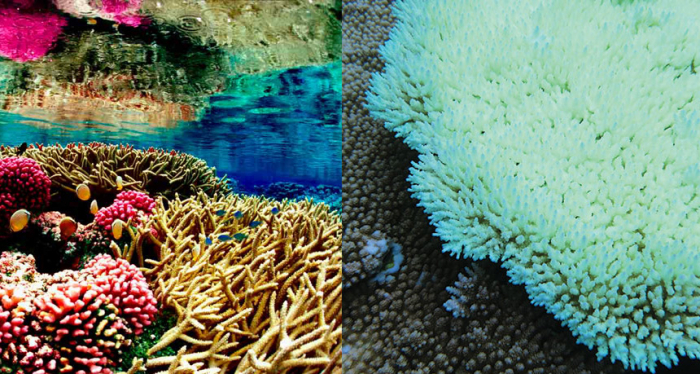Less than 1% of the ocean floor consists of coral reefs. But more than one-quarter of marine animals live in them. With rising temperatures bleaching corals across oceans, Nasa scientists turn to an unlikely tool: a smartphone app.
A team of Nasa scientists in Silicon Valley has developed NeMO-Net, a game to classify corals, into a tool for the National Oceanic and Atmospheric Administration (Noaa).
Without the app, mapping reefs usually involves high amounts of data and low-quality photos, which lead to slow analysis. Eight per cent of the ocean floor is mapped out, said Ved Chirayath, an earth scientist with Nasa who leads the team, at the same photo resolution as terrestrial land.
“The key questions of where is the coral, how healthy is it, and how is it changing over time – that has to be answered by somebody, in the past, having to go through the mapping data and manually classifying those corals,” Chirayath said.
Corals get their bright colors from algae within them. When corals live under stress, they expel the algae and turn pale white, leaving them starving but not dead, yet.
The world’s oceans take up 90% of the heat from greenhouse gas emissions. For corals, the heat leads to mass bleaching.
On my home island, Guam, a third of the coral reef died between 2013 and 2017, according to the University of Guam. Rising ocean temperatures and extreme low tides killed 34% of the island’s reefs, followed by another 60% that disappeared on the east coast of the island.
In 2020, one-quarter of the Great Barrier Reef bleached and more than 1,000 individual reefs showed signs of death. The 2020 bleaching was second to a 2016 bleaching, where 30% coral died in one of the worst events since 1998.
With this team, Chirayath spent three years planning out the game, released last year. They created a fluid lensing model, which used drones to capture coral reefs. They attracted 100,000 users in the first month and worked with the United Nations. Later, Chirayath plans to expand the game’s mapping from American Samoa, Puerto Rico and Guam to include Palau.
In their coral work, Nasa created an algorithm. “It sounds trivial, but using a neural network to map corals is not easy at all,” Chirayath said.
The accuracy in identifying corals usually hovers around 60%, he said. Now users progress through game levels to achieve 90% accuracy, and the data gathered develops 3D, spinning pictures of coral species.
By linking the image classified by one gamer to the image of another gamer, Nasa researchers use the best of human discernment and feed that information to a supercomputer, which creates a highly accurate picture of a coral species.
“There’s no margin for error. It has to be incredibly precise for us to have confidence in the results and tell people with 95% accuracy what is happening to your reef,” Chirayath said.
The core part of the game relies on citizen scientists to classify coral. With a score higher than that of Chirayath, the top gamer is 11 years old.
“There’s something about a kid’s mind,” Chirayath said. “When they are trained and exposed to something at such an earlier age, they become sort of prodigies.”
Beyond underwater beauty, corals form a key part of culture on island communities like those in Guam and Hawaii.
“They say that the first thing was the coral,” said Ku’ulei Rodgers, principal investigator of the Coral Reef Ecology Lab at the University of Hawaiʻi, referring to a local chant. “They understood how important it was not just to their subsistence but to every other organism that there was.”
Reducing coral bleaching requires enough information to figure out which areas die fast. The trick, Rodgers said, is finding the more resilient coral and using one of the hundreds of technologies – such as shading or genetically modified nurseries – to preserve them.
For islands that rely on tourism, the industry thrives largely because coral reefs create colorful fishes and white sand beaches. To preserve that image, Heather Howard, co-founder of the Coral Reef Education Institute in Hawaii, said tourists and locals have to be educated about corals.
“They wear chemical sunscreens, they walk on it, they kick on it,” Howard said. “They think it’s a rock, or they just don’t know what it is.”
While a game that educates a user about coral reefs will not solve coral bleaching, the lower the human effect, the higher the chance of recovery.
“People would look under an ocean surface and not know what they were looking at,” Howard said. “The game puts them into a different category.
The Guardian
More about:
















































